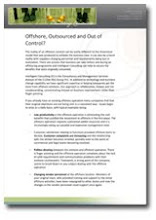The UK labour market has a long way to go to join the leading OECD countries in age equality. The conversation surrounding Generation Y and how to welcome and adapt to their arrival in the working world is getting louder and louder, and rightly so, but it could be drowning out efforts to cater to older workers.
We’re well aware that the UK has an ageing population, many of whom are fit for and willing to work. So why aren’t we drawing on this huge talent pool of unrivalled experience? It’s not for lack of valid reasons; we have a strong stick, and a stronger carrot. The stick is the current skills shortage. ‘The stark truth is that, unless a higher proportion of older people remain in the labour force, or there is a significant increase in the productivity of those in work, total employment growth in the UK will slow’, according to a CIPD report entitled Avoiding the demographic crunch; labour supply and the ageing workforce. It’s likely that this ‘significant increase’ was suggested with a touch of skepticism; it would have to be a significant increase indeed to compete with the productivity boost we could expect from employing the host of qualified and experienced elder workers.
The carrot is the thought that, according to recent research from PwC, raising our levels of elder employment to match that of Sweden (who hold third place) could generate an extra £10 billion in the UK each year. Another reason is for the sake of equality and decency, but unfortunately, employing younger workers is proving too much cheaper for many companies to ignore.
Thankfully though, we are starting to see a rise in the number of companies employing older workers. The UK currently stands in 19th place out of 34 OECD countries, but we could improve this dramatically by, for instance:
· Ensuring that employers have inclusive retirement practices
· Improving the capability of line managers
· Investing in training and development
· Supporting employee health and wellbeing
· Moving towards more flexible working
The focus for dealing with older, more experienced employees needs to be about creating a working environment which encourages their potential. The benefits of this are being increasingly recognised as a major competitive advantage for both business and overall national economic output. There may well be challenges from business to business in implementing this, but the economic and social benefits could be huge (for instance rising tax revenues and falling welfare payments).
Of course, the Government has its part to play in tightening up regulations and discrimination laws, but in HR, we also could work harder to ensure that we’re embracing the potential across the age scale. It will require flexibility and innovation from our business leaders, but maybe half the battle is realizing that the job is not as hard as we think.













